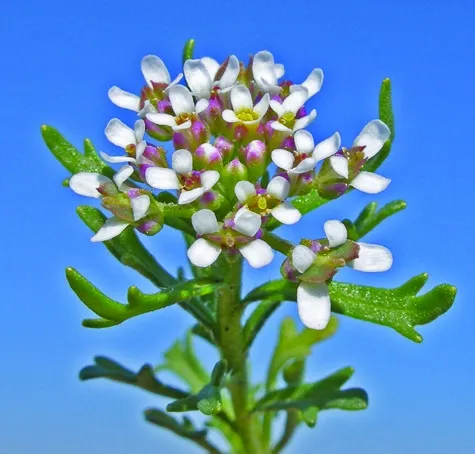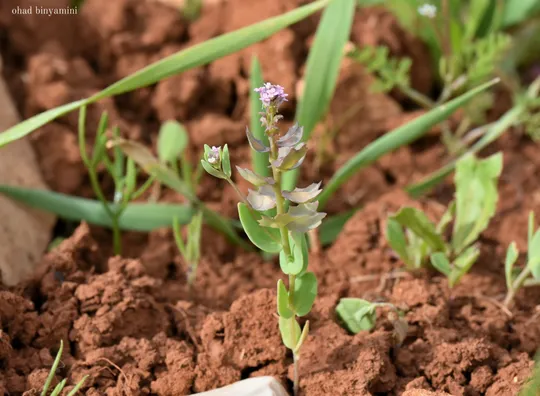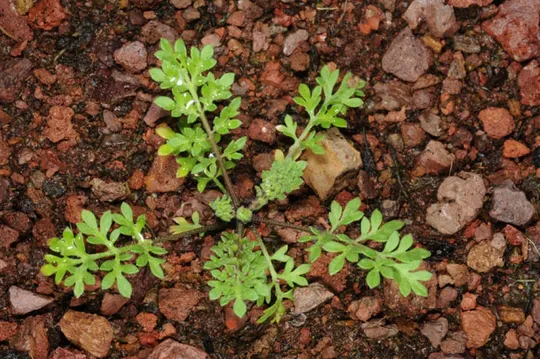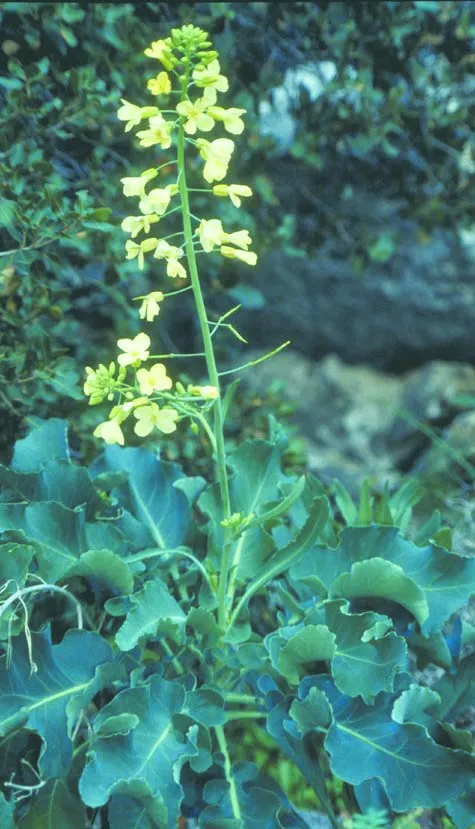Oriental Colewort
Crambe orientalis
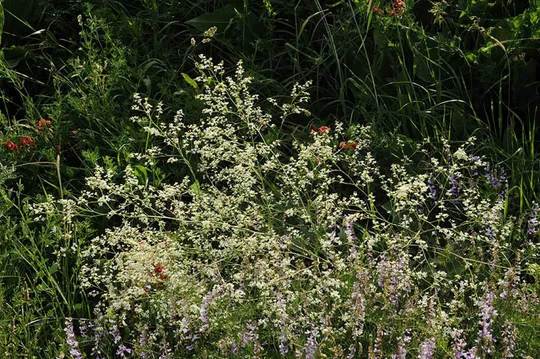
Crambe orientalis
was found in Israel by Bill Kunin in 1986, in the Mount Avital crater in the northern
Golan Heights. Since then the species was seen in the area (west of the water pool
junction, near the orchard hut, at the base of the Mount Bental escarpment)
several times until 1990.
In Jordan, Crambe
orientalis grows on loess fields and on brown alluvial soil in the transition
zone at an altitude of 700-1200 meters. In the Golan, it is found at the base
of the slope of volcanic tuff at an altitude of 970 meters, on alluvial soil ventilated
with tuff particles. In Jordan, it is a weed in fields and edges of orchards in
the transition zone of the Karakh Plateau at altitudes above 800 meters.
The genus Crambe includes 20 different species found
in the Mediterranean region (mainly annual species), in Micronesia, in the Euro-Siberian
region (mainly herbaceous perennial species), in the Irano-Turanian region, and
the genus has also penetrated into Equatorial Africa. In the Middle East, four
species grow in the Mediterranean and the steppe areas of the region, but not
in the desert. The genus has a unique fruit shaped like a small ball 1-2 mm in diameter,
with only one seed. The ball is actually the beak of the siliqua and is characteristic of the Brassicaceae; below the ball, there is a tiny segment, which is the remains of
the siliqua that atrophied and shrunk. The seed is integrated in the body of
the beak, which does not open after ripening. Michael Zohary, who did his PhD
on fruit mechanisms and seed dispersal in the plants of Israel, found an evolutionary
trend in the Brassicaceae family in which the siliqua
becomes smaller and is replaced by the beak, into which the seeds "enter".
According to this trend, Crambe is at the peak of Brassicaceae evolution, and therefore it is placed in the literature among the
last genera in the Brassicaceae family.
·
In
Israel, there is a single Crambe orientalis site, suspected of being extinct. No rare species survey was conducted
in the area.
·
The
site is located within the volcanic crater of Mount Avital outside the Mount
Avital Reserve.
·
The
C. orientalis habitat is loess fields and ventilated alluvial soil in
the transition zone. These are the best agricultural lands in the Golan, and
therefore the habitat is seriously threatened.
The Mount Avital and Mount Bental Crambe orientalis
populations should be found again and the Mount Avital reserve should be
expanded to include it. The population should be monitored and research should
be conducted to determine the disturbance factors that led to its reduction. A
field survey should be conducted in the northern Golan to find additional
populations.
Crambe orientalis grows in the
Middle East, deviating to the north in the Caucasus and into Central Asia; it grows
in Jordan, Syria-Lebanon, most of the regions of Turkey, northern and central
Iraq, northwestern Iran, Afghanistan and Turkmenistan in Central Asia. C.
orientalis is a typical Syrian Desert species and common in the steppe-desert
regions of Syria. In Jordan, it is common on the Al Karak Plateau in southern
Moab at altitudes of 900-1000 meters.
Crambe
orientalis is a cruciferous herbaceous perennial plant that disperses its seeds
as a tumbleweed. In Israel, it is found only on a single site in the Golan, at the
foot of Mount Bental. The population may have become extinct following the
development of orchards in the Mount Avital crater. This is an important Irano-Turanian
species, characteristic of traditionally cultured loess fields in the Syrian
Desert and Jordanian steppes. It is possible that C. orientalis reaches the
western limit of its range in the Middle East on Mount Bental (it may possibly grow
in the Valley of Lebanon as well).
מזר, ש. ושמידע, א. 2016. כרבה מזרחית – מין נדיר מאוד הגדל בישראל רק בגולן. קישור למאמר
Current Occupancy Map
| 1000 squre meter pixel | 5000 squre meter pixel | 10000 squre meter pixel | |
|---|---|---|---|
| number of observations | 0 | 0 | 0 |
| in total pixels | 0 | 0 | 0 |
| Family | Brassicaceae |
| Classification | On the endangered species list |
| Ecosystem | Mediterranean Semi-Steppe |
| Chorotype | Western Irano - Turanian |
| Conservation Site | Mount Avital - Bental |
| Rarity |
1
6
6
|
|---|---|
| Vulnerability |
0
2
4
|
| Attractiveness |
0
0
4
|
| Endemism |
0
0
4
|
| Red number |
1
4.2
10
|
| Peripherality | 0 |
| IUCN category | DD EW EX LC CR EN VU NT |
| Threat Definition according to the red book | Endangered |
 Based on:
Based on:
